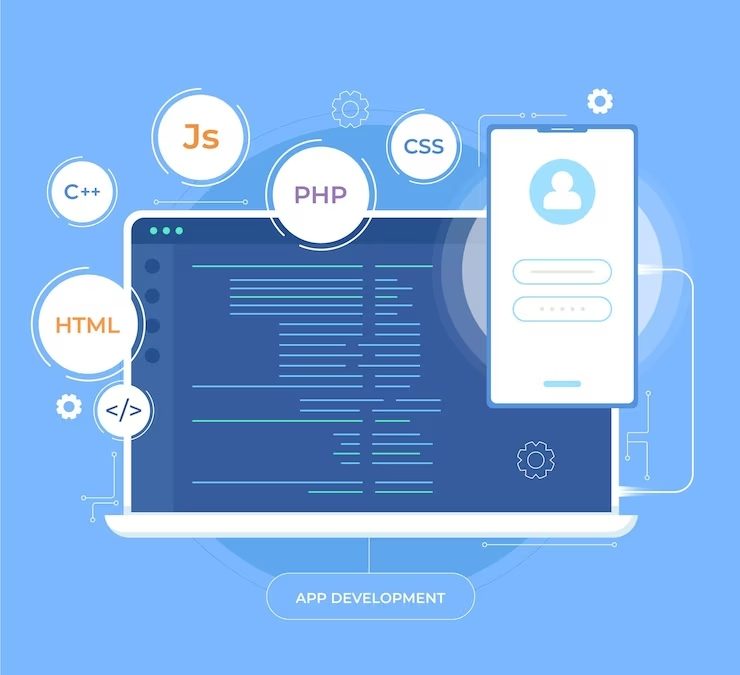In the dynamic landscape of application development, the emergence of Low-Code platforms has reshaped how developers bring ideas to life.
The demand for rapid, efficient, and cost-effective solutions has propelled Low-Code Application Development into the spotlight. These platforms empower developers with tools to create software applications swiftly, often without delving deep into intricate lines of code.
As the popularity of Low-Code solutions soars, it becomes crucial for developers to navigate this transformative space with care. While these platforms offer unprecedented speed and agility, they also pose potential pitfalls that, if overlooked, can hinder project success.
In this blog post, we’ll explore five common mistakes developers make with Low-Code platforms and, more importantly, how to sidestep them.
By understanding and avoiding these pitfalls, developers can harness the full potential of Low-Code Application Development to create robust, scalable, and secure solutions.
Table of Contents
ToggleMistake 1: Underestimating the Learning Curve in Low Code Application Development Solutions
A common blunder when using low code application development solutions is underestimating the learning curve.
Some developers might assume that because Low-Code is user-friendly and intuitive and they can jump right in without much effort. However, a bit of a learning curve is involved – understanding how the low code application development solution operates, its features, and how to optimize your workflow with it.
To avoid this mistake, it’s crucial to invest time in learning how the low code application development solution works. This could involve training sessions, reviewing documentation, and experimenting with smaller projects initially.
Mistake 2: Overlooking Safety in Low-Code Application Development Solutions
Ignoring security concerns is another common mistake in using low code application development solutions. In the digital world of low-code applications, security is like those locks – it keeps your creation safe from potential threats.
When developers neglect security, they leave their applications vulnerable to cyber-attacks and data breaches. Just as a poorly secured house invites burglars, a poorly secured low-code application becomes a target for malicious actors in the digital realm.
To avoid this mistake, developers working with low-code solutions must prioritize security measures. This involves regular security check-ups, using best practices for secure coding, and ensuring that the application complies with industry standards.
Mistake 3: Forgetting to Plan for Growth in Low-Code Application Development Solutions
In the digital landscape, scalability ensures your application can handle more users, data, and features as your project grows.
In the context of low-code applications, not planning for scalability means your software might struggle when more people start using it or when you want to add extra functionalities.
To avoid this mistake, developers should conduct performance testing to ensure their low-code applications can handle increased loads.
Additionally, designing the application in a modular way allows for easier expansion and ensures that it can grow seamlessly as your project evolves. By remembering to plan for scalability, developers can avoid the hiccups that come with unexpected growth in their low-code applications.
Mistake 4: Missing the Personal Touch in Low-Code Application Development Solutions
In the realm of low code application development solutions, a common slip-up is overlooking customization needs. It is like adding a personal touch to your low-code application, tailoring it to meet specific requirements.
This oversight can affect the user experience and adoption of the application. Users might find it challenging to navigate or feel restricted if they can’t adapt the application to suit their unique needs.
To sidestep this mistake, developers should explore ways to extend the capabilities of their low-code platform. Additionally, integrating external tools allows for greater flexibility, enabling users to customize their experience further.
By paying attention to customization needs, developers ensure their low-code applications are not just functional but also adaptable to the diverse preferences of their users.
Mistake 5: Forgetting to Take Care of Your Low-Code Creation Over Time
In low code application development solutions, a common mistake is failing to plan for maintenance and updates.
When developers neglect maintenance and updates, the performance might suffer over time, and you could run into unexpected issues. Similarly, failing to plan for maintenance in the digital space can lead to glitches, security vulnerabilities, and a general decline in the application’s effectiveness.
Developers must incorporate regular updates and patch management into their plans. Additionally, enforcing monitoring and analytics tools can help recognize issues before they become significant problems, ensuring your low-code application stays in top-notch condition over the long haul.
In Conclusion
Low-Code Application Development Solutions demands both diligence and meticulous planning. As we’ve explored the common mistakes developers may encounter, it becomes evident that success in this realm is not just about the tools but also the approach.
However, with careful planning, developers can navigate these challenges seamlessly. Developers, armed with knowledge, commitment, and strategic planning, have the power to maximize the potential of Low-Code platforms.
These tools are not just accelerators but enablers of innovation, efficiency, and agility. The future of application development is indeed low-code, and with diligence and planning, developers can shape that future to its fullest potential.
Related posts
Hot Topics
3 Ways in Which Small Businesses Can Optimize the User Experience of their Corporate Website
When it comes to improving the user experience of your corporate website, you should be aware that this is not…
Crisis Management for Insurance Agencies: Preparing for the Unexpected
It’s not a question of if something goes wrong—it’s when. Whether it’s a cyberattack, regulatory shake-up, natural disaster, or internal…



